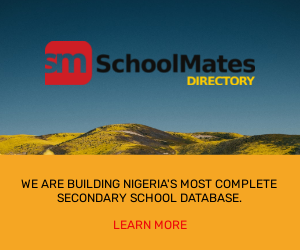How to Write a Grant Proposal: Learn how to write a grant proposal in a few easy steps. Understanding how to write grant applications is significant since you might use them to get financing for several important projects. We discuss how to write a successful grant request in this post.

To be funded, grant requests must be treated as projects with specific outputs or objectives. Projects must produce quantifiable results to be funded.
However, this general approach has considerable drawbacks. To start, you must look for more specialist advice on grant writing within your area or field.
Second, you need to properly abide by the proposal parameters given by the funding organizations you are submitting to.
By consulting with teachers, mentors, former grant recipients, the funding agency/group you are applying to, and dependable counselors in your profession, you can learn more about the characteristics of successful grant proposals in your situation.
What is a Grant Proposal?
In a nutshell, it is a request for funding for a charity or for-profit endeavor.
Grant requests first seem to just help the company or business owner who needs the money. It’s not the case, though.
It is an investment in positive transformation for grantees rather than a random project.
A person or group that gives you money is known as a grantee. They affect a company’s ethics, principles, and culture.
How Do I Write Better Grant Proposals?

Before you begin, you must prepare. When it comes to your entire fundraising plan, writing a grant application for a nonprofit shouldn’t eat up a lot of time.
Before beginning your project, you must first determine your fundraising goals, estimate project costs, schedule your work, and locate suitable financing sources.
Let’s move on to the format that you should use for a typical grant proposal. Write a Grant Proposal: A Guide
1. Write a Strong Cover Letter
The best technique to get the funder’s attention and start conversation is through your cover letter.
Compared to the rest of your grant application, the letter may be less formal and more informal.
Your cover letter’s primary objective should be to persuade the reader to read your proposal.
They undoubtedly received tens or even hundreds of grant applications, therefore your letter should make you stand out from the crowd as much as you can.
2. Start with A Short Executive Summary
The executive summary is the first section of every successful grant, which brings us to grant writing.
A proposal summary, also known as an executive summary, is simply a simplified version of the entire proposal.
It summarizes your business, your market niche, your proposal, the goals of the project, and your overall grant request.
It should be succinct, direct, pragmatic, factual, and have enough details to be understood.
READ ALSO!!!
- Human Resources Internships
- Johnson and Johnson Internship
- National Geographic Internships
- Warner Bros Internships
3. Introduce Your Organization
Now that the presentation’s overarching backdrop has been set, it’s time to introduce your business or group. Give as much information as you can about the structure, purpose, background, and experience of your company.
By providing key staff biographies, your company’s track record (success stories), corporate goals, and philosophy, you highlight your skills.
Include details about all active licenses, industry certifications, and business and indemnity insurance plans (such as ISO or Quality Certifications).
You provide proof that your company or organization is capable of completing all deliverables, both in terms of execution and upholding all legal, safety, and quality criteria.
You may be required to provide solvency statements to demonstrate your capacity to pay your employees and contractors on time.
4. Write a Direct Problem Statement
A key element of the grant proposal structure is the problem statement.
This section—also referred to as the “needs statement” or “statement of need”—is where you outline the problem your community is experiencing and how you propose to address it.
It’s important to investigate the history of the underlying problem, any tried-and-true but potentially unsuccessful former solutions, and the factors that would make your suggested solution work.
5. State Your Goals and Objectives
One of the most important steps in the grant application process is clearly describing your goals and objectives.
Many projects fail because they neglect or handle this stage badly, meaning that they completely wasted their efforts.
They will measure detail the target outcome and the standards by which success in your writing.
Outlining the benefits that the grantee, community, government, or client will have because of their investment is crucial in this section.
Although they sound alike, goals and objectives should be maintained apart.
As opposed to aims, which are more general declarations of intention, think of objectives as more targeted, quantifiable pronouncements of intention with a deadline.
6. Project Design, Methods, and Strategies

It’s time to outline your strategy for achieving your goals now that the funding source or grantee is aware of them.
List the new jobs and talents, additional facilities, transportation, and support services you’ll need to complete the project and satisfy the defined success criteria.
Through effective project management discipline and practices, with explicit requirements set and individual tasks described, a strong emphasis on tasks, deliverables, and outcomes will be maintained (project schedule).
7. The Evaluation Section, Tracking Success
How will you evaluate the program’s effectiveness? This section deals with that subject.
Along with details about who will do the review, how long it will take, and the specific skills or materials needed, the cost of the project’s assessment phase is also given.
This is one of the most important parts of writing a grant proposal because assessments are something that all funders will check for.
Both governmental agencies and private foundations require information on the success of the effort they financed.
8. Other Funding Sources and Sustainability
Your founders won’t be interested in investing in an unpromising short-term project.
They’ll be much quicker to applaud a project with the potential for widespread success and recognize a long-term victor.
Therefore, you must show how you can achieve this. Beyond the project, there are additional financial conditions for your grant application.
This section covers the entire cost of ownership, which includes ongoing upkeep, typical company operations, and operational support.
To finish this, you might need to describe the expected recurring costs (if any) for at least five years.
9. Outline a project budget
Unquestionably, one of the most important grant application topics is budgeting. This is the moment to go into great operational depth on how you will use the resources.
The services can be succinctly and precisely described using a table of services (or service catalog) and products delivered. Give a thorough justification of all charges.
Remember that the project budget section is the real heart of your grant application.
A high quote or overcharging could result in you losing the grant and being charged with profiteering.
Underquoting could help you land the job, but breaking your word could hurt your rapport with the grantee.
Frequently Asked Questions
1. Are Business Proposals Necessary?
Writing a business proposal will help you make important decisions on things like cash flow, marketing, and personnel.
Having clearly defined goals and objectives will also enable you to monitor the business’s performance and make adjustments as you move forward.
2. Why is a Proposal Necessary?
A project proposal outlines the purpose and scope of a project.
This is helpful before a project takes place since it ensures both parties agree on what the project itself will include.
It states to the decision-maker or stakeholder that the service provider understands the scope of the project.
3. How Does a Business Proposal Work?
A business proposal is an official pitch to clients selling your products or services.
A business proposal outlines a particular product or service offered by an established business to a prospective client.
You’re trying to sell your prospective client on your product or service, not on your business itself.
4. What is the Difference Between a Business Plan and a Proposal?
A business plan is different from a business proposal in terms of content, structure, writing style, goals, and purpose.
The most important difference to note is that a business plan is a written presentation of facts while a business proposal is a price quote and a call to action.
5. Can a Business Succeed Without a Business Plan?
Another study (2) found that companies that plan grow 30 percent faster than those that don’t plan.
This study found that plenty of businesses can find success without planning, but that businesses with a plan grew faster and were more successful than those that didn’t plan.
If you find this article, How to Write a Grant Proposal helpful, kindly share it with your friends and family.



